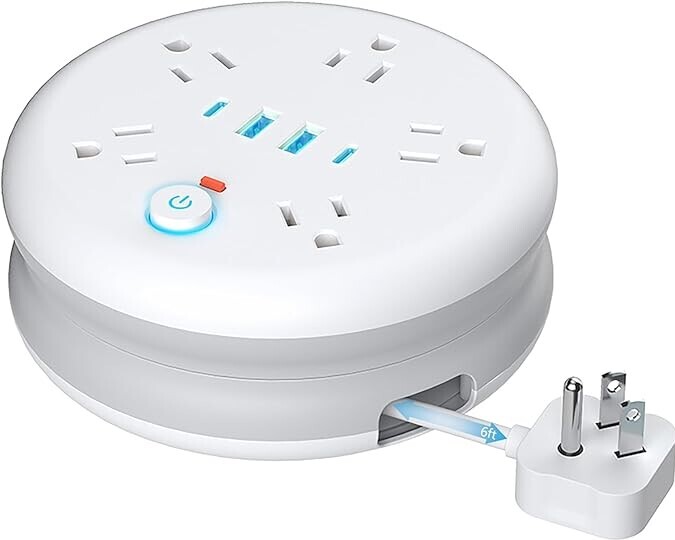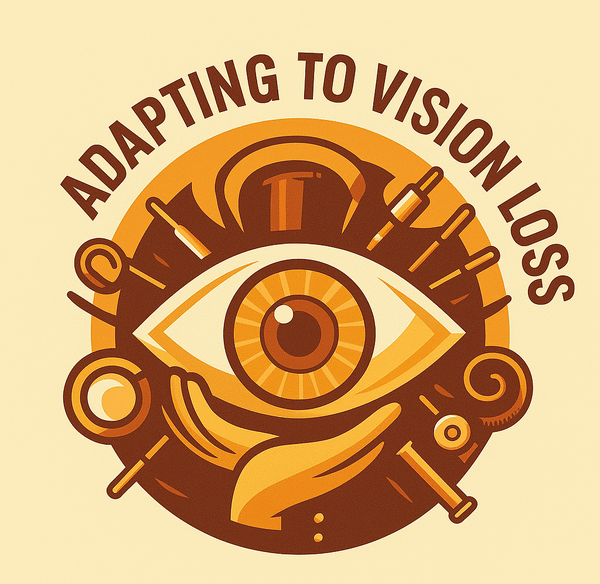As someone who’s been navigating life with visual impairments for years, I’ve encountered my fair share of frustrations, and wall outlets are surprisingly high on the list. They’re essential to daily living, but their placement and design can be a real challenge for those of us who can’t rely on sight.
The most obvious issue is that most wall outlets are located at floor level. This often means getting down on hands and knees, fumbling around for the socket, and hoping not to scratch the wall in the process. For anyone with limited mobility or balance issues, this isn’t just inconvenient, but downright unsafe. At one point I was on my knees trying to insert a plug and I was so sure I had it right that I “forced” the plug in only to realize that I had just pushed it all the way through the outlet cover. Not good.
In the kitchen, things don’t get much easier. Outlets there are usually along the backsplash, so you have to lean over the counters to reach them. For someone with vision loss, this can really mess with your balance, especially with sharp objects, hot surfaces, or fragile items around. Sometimes, it feels like these setups weren’t designed with us in mind at all.
So, what’s the deal with traditional outlet designs? They don’t seem to consider the needs of the visually impaired. It’s like the world is made for those who see perfectly well, leaving us to come up with our own solutions and strategies. But the good news is that, with some creativity and adaptation, using wall outlets doesn’t have to be such a big hassle.
Hacks and Solutions
Over the years, I’ve adopted a few hacks that make using wall outlets much easier, safer, and less frustrating:
 1. Use Power Strips or Extension Cords Strategically
1. Use Power Strips or Extension Cords Strategically
One of the simplest solutions is to extend the reach of the outlets to a more accessible location. I use power strips and retractable extension cords to bring the connection point closer to where I actually need it. For example, in the living room, I have a power strip mounted on the side of a table rather than crawling under it every time I need to plug in my phone or a lamp. In the kitchen, I place an a retractable power strip on the counter that feeds from an outlet behind the counter. It has multiple outlets as well as a couple of usb ports. When i need to use it I simply pull it to the front of the counter and retract it to the back when I am done. This eliminates the need to lean awkwardly over the sink or appliances.- Outlet Covers with Guides
There are outlet covers available with built-in guides that help funnel the prongs of a plug directly into the socket. These are a game-changer for me because they take away the guesswork. They’re also great for preventing accidental scratches on the wall or outlet faceplate. They are a little bit difficult to find is you are doing an internet research due to having to know a fairly accurate search phrase. But, I do kno9w hey are available at Amazon. - Labeling Outlets for Easy Orientation
If you’ve ever struggled to figure out which way to hold the plug, you’re not alone. I use tactile labels or bump dots to mark one side of the outlet so I know exactly where to position the prongs of a plug. This tiny adjustment saves me time and frustration every day. - Smart Outlets
If you’re comfortable with a bit of technology, smart outlets can eliminate the need to physically plug and unplug devices frequently. With a smart outlet, I can control power to devices like lamps, coffee makers, and chargers using my phone or voice commands through a smart speaker. This saves me from repeatedly bending down or stretching to reach the outlet. - Rechargeable Devices
For some tasks, I’ve swapped traditional plug-in devices for rechargeable ones. For example, I use a rechargeable desk lamp in my workspace instead of one that needs to be plugged into an outlet. This approach reduces my reliance on hard-to-reach outlets altogether. - Install Higher or More Accessible Outlets
If you have the ability to make modifications to your living space, consider having outlets installed at a more accessible height. For example, I had an electrician add a couple of outlets at waist level in my home office. While this requires an upfront investment, it has dramatically improved my ability to manage cords and plugs.
Safety Considerations
When it comes to using wall outlets, safety is just as important as convenience. Here are a few extra tips I follow to stay safe:
Avoid Overloading Outlets: If you’re using power strips or extension cords, be mindful of their capacity to prevent overheating and potential fire hazards.
Inspect Cords Regularly: Frayed or damaged cords can be dangerous, so I make it a habit to check them periodically by touch.
Use Grounded Equipment: For appliances and tools, I stick to three-pronged plugs and grounded outlets whenever possible.
If you have the ability to make modifications to your living space, consider having outlets installed at a more accessible height. For example, I had an electrician add a couple of outlets at waist level in my home office. While this requires an upfront investment, it has dramatically improved my ability to manage cords and plugs.
